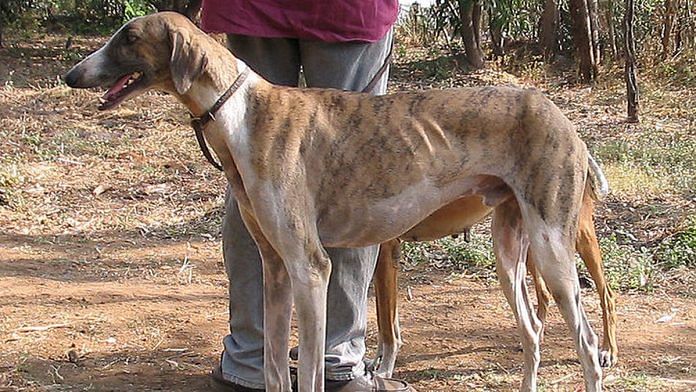New Delhi: Three years after the Army inducted the indigenous breed of Mudhol hounds in its inventory, the canines have now been validated at several units for operations and other routine duties, top sources have told ThePrint.
The training of these Karnataka-origin hunting hounds first started in 2016 by the Army’s Remount and Veterinary Corps (RVC) centre in Meerut. The dogs are expected to play a crucial role in detecting Improvised Explosive Devices (IEDs) and tracking during counterinsurgency operations carried out by the Army, among other roles.
Sources in the Army also said that training of these canines at different locations — depending on terrain and climatic conditions — is over and validation to induct them into operations has already been received from some units to which they were attached. They will be deployed in the sensitive army units of Jammu and Kashmir, and the Northeast.
About eight of these intelligent, indigenous breed of Mudhol hounds would be inducted into the Army for operational purposes. The dogs are known for its lanky and agile bodies, have high resistance to diseases, good vision and sense of smell, and require little maintenance as compared to its counterparts.
Dogs may be employed in specialised roles too
Known predominantly for their hunting skills, Mudhol hounds were bred by Ghorpade kings of Mudhol (now in Bagalkot in North Karnataka) in the 1920s, by crossing Persian and Turkish varieties with local dogs.
They featured in political name calling last year when Prime Minister Narendra Modi asked the Congress to learn patriotism from Bagalkot’s Mudhol dogs during an election rally in Karnataka’s Jamkhandi.
Sources said that while they have been trained for multipurpose functions, the Army is also checking the feasibility of employing these canines for specialised tracker roles.
“After these dogs were trained in Meerut, a comprehensive study has been conducted on them and inputs from different areas have been taken. There are certain quality control measures being carried out now — to check the survivability of these dogs in different terrains, such as in deserts, forests or snow and in adverse environmental conditions,” an Army officer said.
The officer also said that these dogs would be deployed for operations depending on the Army’s requirements.
“While their validation at certain locations have already been completed and the dogs are ready to be deployed in some sectors, validations are awaited from other sectors. The reports have been submitted to the higher formations and are pending the final clearance from there,” the officer quoted above said.
Trained for explosives detection, infantry patrolling
The first batch of these dogs were gifted to the Army by central sources in Karnataka and has since been trained and reared by the forces. Between the ages of six and nine months, the dogs were given basic obedience training, after which they were imparted specialised teaching, depending on their capabilities.
A specialised training lasts for 25 to 36 weeks approximately and the canines are deployed in various army establishments/units for validation where they are given operation-specific training.
At present, Army dog units have different breeds, each trained for different duties such as detection of explosives and mines, guarding purposes, infantry patrolling, tracking and avalanche rescue.
While Labradors are usually trained to detect explosives, mines and narcotics, tracking as well as avalanche rescue, German Shepherds are considered good for guard duties and infantry patrolling.
Dogs trained for explosives detection have shorter life span as compared to those trained for other roles. Many of these Army dogs have played important roles in counterinsurgency operations and have also been awarded the Chief of the Army Staff’s Commendation Card for excellence and various gallantry awards.
When the Army’s “decorated” explosives detection dog ‘Dutch’ died earlier this month at the age of nine, the eastern command tweeted that it was “A real hero in service to nation”.




Indian Defence establishment must utilize monkeys ? after due training against the terrorists, if King Ram could take help of monkeys? why not modern India?
Great idea to use indigenous breeds like Mudhol. They are hardier, more suited for local weather conditions and are less susceptible to opportunistic infections.